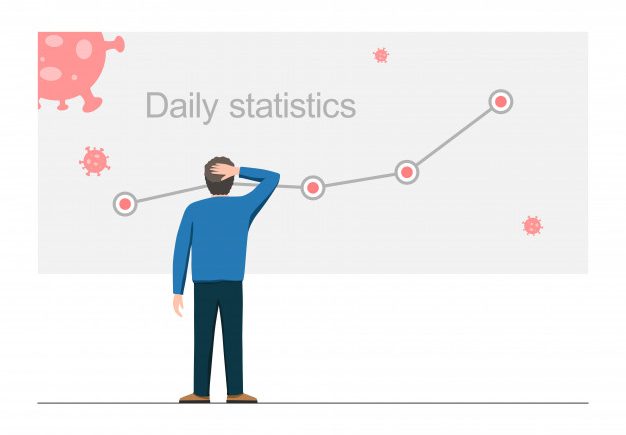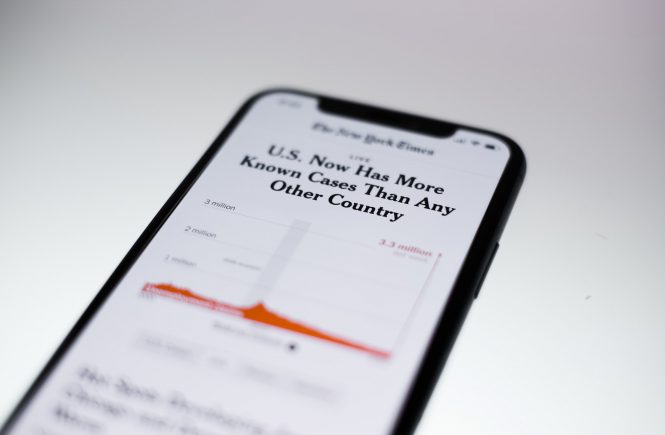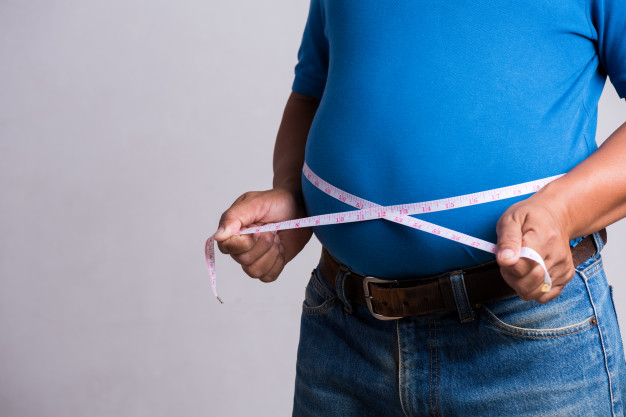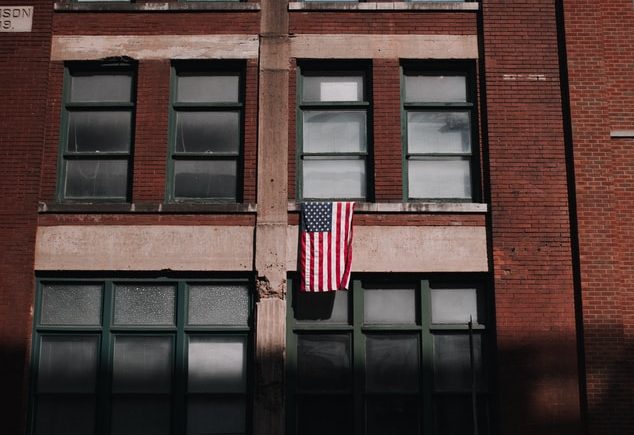Tearing Apart Our Social Fabric, Thread by Thread
It seems like some folks have used the ghost of Ernesto “Ché” Guevara as their guide through the COVID-19 epidemic in the United States. “To send men to the firing squad [job loss, suicide, substance abuse], judicial [scientific] proof is unnecessary… This is a revolution! And a revolutionary must become a cold killing machine motivated by pure hate [of President Trump].”
Apparently, Ché was on to something. Forty-three percent of U.S. adults and 52 percent of low income adults say they or someone in their household has lost a job or taken a pay cut due to the outbreak. How can any American stuck at home not be disgusted by politicians who are still collecting their full paychecks while the middle class and working poor descend into an abyss. To be fair, Michigan’s governor announced that she would take a 10 percent pay cut in solidarity with the people who had a 100 percent pay cut. Nonetheless, many have unquestionably accepted the government’s oft times contradictory mandates.
A Kaiser Family Foundation poll found that despite the disruption of their lives 80 percent of Americans say strict shelter-in-place measures are worth it to protect people. This blind acquiescence is evidenced by unthinking people wearing masks while driving alone in their cars with closed windows. And perversely, designer face masks are proliferating. Wearing a mask is a sometimes necessary, serious, unpleasant thing to do. It is not fun. It is not cute.
It is not only the evil Chinese Communists that caused panic about the coronavirus in the U.S. via text messages falsely saying President Trump was imminently going to lock down the entire country. The media are complicit in the hysteria. Again, Ché Guevara had it right: “Foreign reporters—preferably American—were much more valuable to us at that time than any military victory. Much more valuable than recruits for our guerrilla force, were American media recruits to export our propaganda.” Media hacks are collecting their paychecks to scare our bodily fluids out of us with day in, day out, COVID, COVID, COVID. We’re all going to die! (Of course, they don’t discuss the 1,300 people a day who die of complications of high blood pressure.)
COVID-19’s angel of death spares most people: 80 percent of COVID-19 deaths occurred among persons aged 60 years and over; about 25 percent of all deaths were sick and elderly residents of long term care facilities; nearly 90 percent of persons hospitalized have one or more underlying medical conditions. Oddly, the CDC is boosting the official death toll by including not only people who died due to COVID-19 but those who died of other causes and had the virus that causes COVID-19 in their system.
Antibody testing studies in Santa Clara and Los Angeles (California) and Miami Dade (Florida) counties revealed that infection with the virus that causes COVID-19 is more widespread than indicated by the number of confirmed cases. The mortality is likely 0.1 percent (like the seasonal flu). Many researchers concluded that the data indicated that the virus is widely circulating, we will get infected but likely not die, and the population may develop immunity. The tyrants-in-waiting use the data to mandate lock downs until every last vestige of COVID-19 has disappeared from the face of the earth or a vaccine materializes—which may be never.
Americans have been terrified into accepting tyranny and poverty, softened with assurances that the current state of affairs is “normal.” The airwaves’ constant blare of “we’re all in this together” does not make it so. Some people remain more equal than others. Just ask Nancy Pelosi with her $24,000 refrigerator filled with $13 a pint ice cream that she “gets by” on. Or professional athletes who received their elective surgeries while the rest of the peasants were denied their cancer treatment or the treatment of a painful joint. Or the TV star who complained about being “in jail” in her $45 million home.
Meanwhile, liquor sales are up 55 percent, calls to suicide hotlines and suicides have dramatically increased, domestic violence is rising, and anti-anxiety medication prescriptions are up 34 percent since the virus consumed our lives. We are on the path to becoming fat, depressed, drunken wife-beaters. We are told to ignore statistics because every death is tragic. If the lockdowns persist, every life is a tragedy in the making.
This epidemic has become the opportunity to change the U.S. from a free, energetic, resourceful individualistic society to an authoritarian, collectivist society of broken souls addicted to government largesse. To wit, a Los Angeles version of wealth redistribution: People can’t work so they can’t pay their rent. The mom and pop landlords can’t pay their property taxes. The city then buys the “distressed” properties from desperate landlords at cut-rate prices and turns them over to the homeless. Ché would be proud.
Bio: Dr. Singleton is a board-certified anesthesiologist. She is Immediate Past President of the Association of American Physicians and Surgeons (AAPS). She graduated from Stanford and earned her MD at UCSF Medical School. Dr. Singleton completed 2 years of Surgery residency at UCSF, then her Anesthesia residency at Harvard’s Beth Israel Hospital. While still working in the operating room, she attended UC Berkeley Law School, focusing on constitutional law and administrative law. She interned at the National Health Law Project and practiced insurance and health law. She teaches classes in the recognition of elder abuse and constitutional law for non-lawyers.
Obesity: America’s Self-inflicted Preexisting Condition
Consuming too many potato latkes and Christmas cookies has left its mark on our waistlines. Unfortunately for Americans and their medical care, the seasonal overeating seems to last all year. Indeed, the American Medical Association has declared that obesity is a disease.
It may be more accurate to describe obesity as a contributor to certain diseases. Obesity raises the risk of premature death, heart disease, high blood pressure, stroke, type 2 diabetes, gallbladder disease, breathing problems, certain cancers, and osteoarthritis. Certainly, obesity can result from certain uncommon diseases and hereditary factors, but most people become obese simply because they eat too many unhealthy foods and do not exercise.
At its last count, the Centers for Disease Control and Prevention (CDC) estimated that 40 percent of U.S. adults age 20 and over, 21 percent of teens, and 14 percent of preschoolers are obese. A December 2019 study that analyzed 26 years of body mass index (BMI [the relation of weight to height]) data concluded that half of U.S. adults will be obese (BMI>25) by 2030. Some 25 percent will be severely obese (BMI>35). Moreover, less than 5 percent of adults get the recommended 30 minutes a day of physical activity. And even when people living in “food deserts” were presented with healthy options, only 10 percent changed their evil eating ways.
According to the CDC’s last comprehensive analysis, the annual medical cost of obesity in the United States to Medicare, Medicaid, and private insurers was $147 billion in 2008. And the medical costs for obese people were $1,429 higher than those of healthier weights.
The saddest development is the cultural normalization of obesity with lingerie models, singers, and television shows celebrating fatness. Do we high-five people with other lifestyle related conditions such as alcoholism, emphysema, or coronary artery disease? Of course not.
The obese are easy targets for drug company peddlers of quick fixes or “providers” who want to extract money from third-party payors. U.S. pharmaceutical companies spent $6.1 billion on direct-to-consumer prescription drug advertising in 2017. Many ads feature chunky type 2 diabetics happily frolicking about, thanks to the drug company’s magic pill. The ads might as well say, “pass the chocolate cupcakes with statin sprinkles drizzled with insulin.” We all know the prescription of eating less and exercising more is free of charge.
Alas, we are losing the battle of the bulge. A recent study found that participants failed to lose weight despite reporting that they were exercising and watching their diet. The authors concluded that “many of [the participants] might not have actually implemented weight loss strategies or applied a minimal level of effort, which yielded unsatisfactory results.”
While politicians debate the merits of spending trillions of dollars on government-sponsored medical care, a correctable source of high medical costs is hiding in plain sight. Irrespective of who pays for medical care, rational economic decisions must be made. The Affordable Care Act (ACA) waved a magic wand and removed preexisting conditions from the underwriting equation when calculating premiums. A sick person and a healthy person of the same age could purchase insurance at the same price. Consequently, the ACA doubled the costs for people who made the effort to take care of themselves.
The ACA did allow a “tobacco surcharge” of up to 50 percent more for premiums. Why not an obesity surcharge? This would provide an incentive for consumers to take obesity seriously. Additionally, health-conscious persons would not have to pay for the bad habits of others through taxes to fund government health insurance programs or through higher private insurance premiums.
Those who are stricken with illnesses through no fault of their own need a path to affordable medical care. A good start for lowering costs would be eliminating costly middlemen by encouraging consumers to pay directly for day-to-day medical expenses. Expanding contribution limits and eligible uses of Health Savings Accounts would help pay for the more reasonably priced direct-pay surgery and other alternatives to insurance like direct primary care.
With regard to insurance, we need a revival of competition in the insurance market with multiple products and carriers. Once again, single men could opt to decline pregnancy coverage. We need to restore the pre-ACA availability of low-cost catastrophic (major medical) insurance policies to all ages. Even before mandated by the Health Insurance Portability and Accountability Act of 1996 (HIPAA), the large majority of insurers offered guaranteed renewable policies. Here, assuming timely payment of premiums, at the end of the policy period the insurer must renew coverage regardless of the health of the insured. Naturally, this valuable feature costs more but provides consumers with a strong incentive not let the insurance lapse.
Let’s confront the elephant in the room. Healthcare policy should promote personal responsibility, rather than encourage free riders. In America we are free to overeat and under-exercise but we have no right to make innocent bystanders pay for the consequences.
Free Medical Care: a Deal with the Devil?
By Marilyn M. Singleton, MD, JD
Listening to the campaign promises spewed out by the bevy of folks running for president brings the old but enduring story of Faust to mind. Despite being successful, Faust wanted more knowledge and possessions. To that end, he made a deal with Mephistopheles (aka the Devil) who promised to give him everything he wanted in exchange for his soul.
Who isn’t tempted by a bargain or better yet, something for nothing? Free income, free college, and free medical care. What do we have to lose? Self-respect, the opportunity to succeed at a career suited to one’s talents, your privacy and control over your own body.
Intended to ameliorate poverty, universal basic income can be counterproductive. Some promise income for merely having a pulse and others envision the government equivalent of a mama bird regurgitating food into the open mouths of her chicks. Neither option gives a sense of pride and accomplishment or the foundation for character development.
The high cost of college is the justification for free tuition. One key reason for the continually escalating tuition is readily available student loans: no matter the cost, the student can continue to borrow. Endless direct-from-the-government money would likely cause further increases. Further, one-third of college students drop out. The majority of these students were poorly prepared for, and not fully committed or suited to college. It is a bad idea to remove an incentive for perseverance, allow uncommitted students to waste their time on the government dime, or worse be stigmatized as a failure. Finally, as Senator Amy Klobuchar bravely pointed out, the taxpayers cannot afford it.
With regard to medical care, all “medically necessary” health services, including dental, vision, hearing, mental health, long-term care, home and community-based services, physical therapy, prescription drugs with no premiums, deductibles or co-pays from cradle to grave sound pretty good. Sold! Frankly, given the direction so-called reproductive health is going, you may never make it to the cradle. And with the current laser-focus on hospice for all, you may get to your grave a little faster.
Will free medical care halt one of the biggest drivers of poor health and medical costs? According to the Centers for Disease Control and Prevention (CDC), 40 percent of people in the United States are obese. And 47 percent of our $3.5 trillion per year of healthcare spending goes to treat the effects of obesity, with another 8.7 percent attributable to cigarette smoking. People have known for years that eating too much makes you fat and smoking contributes to heart and lung disease. Free care would worsen the problem because patients will expect more pills and procedures to cure their lifestyle-created illnesses rather than taking care of themselves.
Not only is the promise of free stuff an attempt to buy votes, but the politicians themselves have sold their souls to special interests. And we never know whether they are working for the metaphorical Devil or for you, the voters.
According to the Center for Responsive Politics, in 2018, both sides of the Congressional aisle received a total of $134,590,142 in contributions from the health sector (health professionals, device and pharmaceutical manufacturers, hospitals and nursing homes). The health sector was the top spender of lobbying money – some $562,968,799 spread among 2,810 hired guns. Pharmaceuticals/Health Products topped the list with $281,872,969.
On the bright side, when given the full picture, people are not that easily bought. A recent Kaiser Family Foundation study found that 70 percent of those polled approved of Medicare for All when told the plan would eliminate insurance premiums (which are sky-high thanks to ObamaCare). But up to 70 percent opposed Medicare for All when told it would lead to treatment delays, tax increases, or loss of their option for private insurance.
Perhaps those polled read that private insurance is allowed in all but two countries with universal coverage, and patients in all countries have some out-of-pocket expenses. Perhaps they realized that when the citizen money tree has been picked clean, promised services must be reduced. Perhaps they realized that free stuff can be used as a cudgel to keep the recipients in line and trap them in a system with no escape. Perhaps they were of a certain age where they were warned that the tasty-looking Halloween candy might be laced with razor blades. Or more likely, those infamous words, “If you like your doctor, you can keep your doctor” were flashing before their eyes or echoing in their ears.
Free stuff is an age-old snare, a temptation that can steal one’s critical thinking abilities. Despite the old saw that there is a sucker born every minute, there are always those who will not be fooled. Which will you be?
Dr. Singleton is a board-certified anesthesiologist. She is President of the Association of American Physicians and Surgeons (AAPS). She graduated from Stanford and earned her MD at UCSF Medical School. Dr. Singleton completed 2 years of Surgery residency at UCSF, then her Anesthesia residency at Harvard’s Beth Israel Hospital. While still working in the operating room, she attended UC Berkeley Law School, focusing on constitutional law and administrative law. She interned at the National Health Law Project and practiced insurance and health law. She teaches classes in the recognition of elder abuse and constitutional law for non-lawyers.
Congress Should Prioritize Healing, Not Hypocrisy
By Marilyn M. Singleton, MD, JD
May is Mental Health Month and it should inspire us to think about family, community relationships, and our growing disconnectedness. It is not an invitation for Congress and other troublemakers lose their collective minds.
While folks of all colors and lifestyles are quietly living and working together and building relationships, the professional malcontents are looking for offense around every corner. Take the sports teams shunning Presidential Medal of Freedom recipient Kate Smith for having performed some songs with racially offensive lyrics in the 1930s. One of the songs, thought to be satirical was also sung by black actor and well-known civil rights activist, Paul Robeson. Apparently, no one looked into Smith’s motives or other aspects of her life before shrouding her statue in black. How ironic that the very teams that excluded black players are “virtue signaling” at someone else’s expense.
Will the memorials to the progressive icons, Eleanor and Franklin Roosevelt suffer the same fate? Historians note that Mrs. Roosevelt called black folks “darkies” and “pickaninnies.” Yet she was instrumental in having black opera singer Marian Anderson perform in an integrated setting and flew in an aircraft piloted by a Tuskegee Airman, among other things.
The beloved President after whom many black American children were named, had a questionable racial record. He appointed Hugo Black, an ex-Klansman to the Supreme Court. He did not allow black reporters at his press conferences. And he did not support anti-lynching legislation for fear of losing Southern support. The Roosevelts’ personal lives were not exemplary: they both had continuing love affairs—not with each other.
And Harry S. Truman who as president desegregated the army, had made liberal use of the N-word. In a letter to future wife Beth, he wrote, “I think one man is just as good as another so long as he’s honest and decent and not a n***** or a Chinaman…” And as senator he called Mrs. Roosevelt’s wait-staff “an army of coons.” Should we topple his statues and remove his name from all buildings and universities?
People are complicated and must be judged as products of their times.
And when did using salty language while angry become a capital offense? When President John F. Kennedy discovered that the Air Force spent $5,000 for a maternity suite for his wife, he ripped the bark off the general in charge, saying, “This is obviously a f***-up” politically. Presidential candidate John Kerry and Vice President Joe Biden famously added to the mix.
Instead of looking for reasons to tear us apart, our congresspersons should be focusing on proposals trying to move us in a positive direction. Who cares what side of the aisle originated the ideas? Communities and their legislators must find solutions for hypodermic needles and human feces on the streets, the homeless, and drug addiction to name a few. There are 130 people a day dying from opiate overdoses with no easy answer as to the root cause. The Department of Health and Human Services formed a Pain Management Best Practices Inter-Agency Task Force including physicians and other professionals involved in caring for patients with pain and addiction issues. The task force concluded what most physicians already know: patient care must be individualized.
Our congresspersons should be having town halls seeking input from their constituents about their concerns. They may discover that many patients are reluctant to seek treatment fearing loss of privacy. For example, in some states, law enforcement can access the Prescription Drug Monitoring Program (PDMP) database for opioids without a search warrant. Moreover, these privacy intrusions may not be worth it. A 2017 study found that “PDMPs were not associated with reductions in drug overdose mortality rates and may be related to increased mortality from illicit drugs and other, unspecified drugs.” These findings were confirmed in a June 2018 review.
The Centers for Disease Control and Prevention (CDC) has similarly found that the rapid rise in overdoses is due to street drugs. Preliminary research shows that patients who are weaned off long-term prescription opioids are twice as likely to seek out street drugs.
Disturbingly, many physicians are frightened into declining to prescribe opiates or to care for patients with pain by well-intentioned but draconian government programs. One such program is California’s “Death Certificate Project.” Here, Medical Board investigators mine prescription data and cross-reference with death certificates to improperly initiate discipline against physicians although their prescription was not necessarily the fatal dose.
Save for a few rotten apples, physicians are doing their best to care for patients with complex problems. Mental Health Month offers physicians the opportunity to reaffirm that we are not automatons and patients are individuals, not data points. Congresspersons should take this month to stop squabbling and jockeying for power and explore legislation that allows physicians and patients freedom to choose their own path to a healthy life.
Bio: Dr. Singleton is a board-certified anesthesiologist. She is President of the Association of American Physicians and Surgeons (AAPS). She graduated from Stanford and earned her MD at UCSF Medical School. Dr. Singleton completed 2 years of Surgery residency at UCSF, then her Anesthesia residency at Harvard’s Beth Israel Hospital. While still working in the operating room, she attended UC Berkeley Law School, focusing on constitutional law and administrative law. She interned at the National Health Law Project and practiced insurance and health law. She teaches classes in the recognition of elder abuse and constitutional law for non-lawyers.
Warning: Government Can Be Harmful to Your Health
By Marilyn M. Singleton, MD, JD.
Trust in our government was a mere 19 percent in 2013 according to Pew Research Center. Not surprisingly, 56 per cent of Americans think it is not the government’s responsibility to provide a healthcare system. Waivers, favors, off-the-cuff rule changes, and the bungled launch of the Affordable Care Act website validate that distrust. Bureaucratic incompetence and cronyism are not the only reasons we should be wary of government involvement in our medical care.
The federal government has a checkered history when it comes to medical judgments. We now cringe at the words of the revered Supreme Court Justice Oliver Wendell Holmes in the 1927 case, Buck v Bell upholding Virginia’s sterilization law for the institutionalized “feeble-minded.” “[Carrie Bell’s] welfare and that of society will be promoted by her sterilization.
It is better for all the world if, instead of waiting to execute degenerate offspring for crime or to let them starve for their imbecility, society can prevent those who are manifestly unfit from continuing their kind. . .Three generations of imbeciles are enough.” In fact, Carrie’s mother was a prostitute, but not feeble-minded. After Carrie’s release she maintained a job as a domestic worker and became an avid reader. Her “feeble-minded” daughter was on her school’s honor roll.
Let’s recall the appalling Tuskegee Syphilis Study lasting from 1932 to 1972. The U.S. Public Health Service used 400 hundred mainly poor, illiterate black sharecroppers with syphilis as lab animals. They were told they had “bad blood,” but not that they were actually suffering from a serious but treatable disease. All subjects succumbed to untreated syphilis so our government could track the natural progression of the disease.
The U.S. Navy sprayed the presumably harmless bacterium, Serratia marcescens, over San Francisco in 1951 in a biological warfare test. Numerous residents contracted pneumonia-like illnesses resulting in at least one death. The experiments came to light in the 1977 Senate hearings on Health and Scientific Research. Two hundred thirty nine populated areas, including Minneapolis, St. Louis, Washington D.C.’s National Airport, and New York’s subway system, had been contaminated from 1949 to 1969 when President Nixon terminated the program.
In 1989, a Centers for Disease Control and Prevention (CDC)-sponsored study tested an experimental measles vaccine on 1,500 six-month old Black and Hispanic babies in Los Angeles. The CDC admitted in 1996 that parents were never informed that the vaccine was experimental.
According to the Department of Health and Human Services (HHS), lax oversight at the Stratton Veterans Affairs Medical Center in Albany, New York, allowed cancer research coordinator Paul Kornak from 1999 to 2003 to “dishonest[ly] handle research records and demonstrate a complete disregard for the well-being of vulnerable human subjects under his care.” Kornak pleaded guilty to criminally negligent homicide.
In another vein, the degree of political underpinnings in government health policies is unknown. Agencies such as the United States Preventive Services Task Force, self-described as an “independent panel of non-federal experts in prevention and evidence-based medicine,” submit recommendations to the HHS Secretary. Even assuming the recommendations are grounded in science, the Secretary is an arm of the executive branch, so in creeps politics.
This leads us to the question of whether we can always trust “evidence-based medicine.” Reporting bias is systemic in medical literature. A 2012 Cochrane independent review found that company-sponsored trials were more likely to report favorable efficacy results compared with non-industry sponsored studies. Even in academic studies positive results are more likely to be published. A 2009 analysis of 18 surveys by multiple authors found 34 percent of researchers admitted to “questionable research practices.”
Recently, a large analysis of “secure” studies found the European guideline recommending liberal use of peri-operative beta-blockers for non-cardiac surgery in fact caused a 27 percent increase in mortality or some 800,000 deaths over 5 years. The guidelines were based on trials tainted by scientific misconduct by the principal investigator, Don Poldermans, who was also chairman of the committee that drafted the guideline.
Government intervention in medicine can be harmful to your health. Rigid rules and restrictive drug formularies are advanced based on consensus, leaving no room for individualized treatments. We want physicians whom we can trust to be open, honest critical thinkers, not “providers” who are government puppets.
 Dr. Marilyn M. Singleton, MD, JD is a board-certified anesthesiologist and member of the Association of American Physicians and Surgeons (AAPS).
Dr. Marilyn M. Singleton, MD, JD is a board-certified anesthesiologist and member of the Association of American Physicians and Surgeons (AAPS).
Dr. Marilyn Singleton ran for Congress in California’s 13th District in 2012, fighting to give its 700,000 citizens the right to control their own lives.
While still working in the operating room, Dr. Marilyn Singleton attended UC Berkeley Law School, focusing on constitutional law and administrative law. She also interned at the National Health Law Program and has practiced both insurance and health law.
Dr. Marilyn Singleton has taught specialized classes dealing with issues such as the recognition of elder abuse and constitutional law for non-lawyers. She also speaks out about her concerns with Obamacare, the apology law and death panels.
Follow Dr. Marilyn Singleton on Twitter @MSingletonMDJD
More info about Dr. Marilyn Singleton





